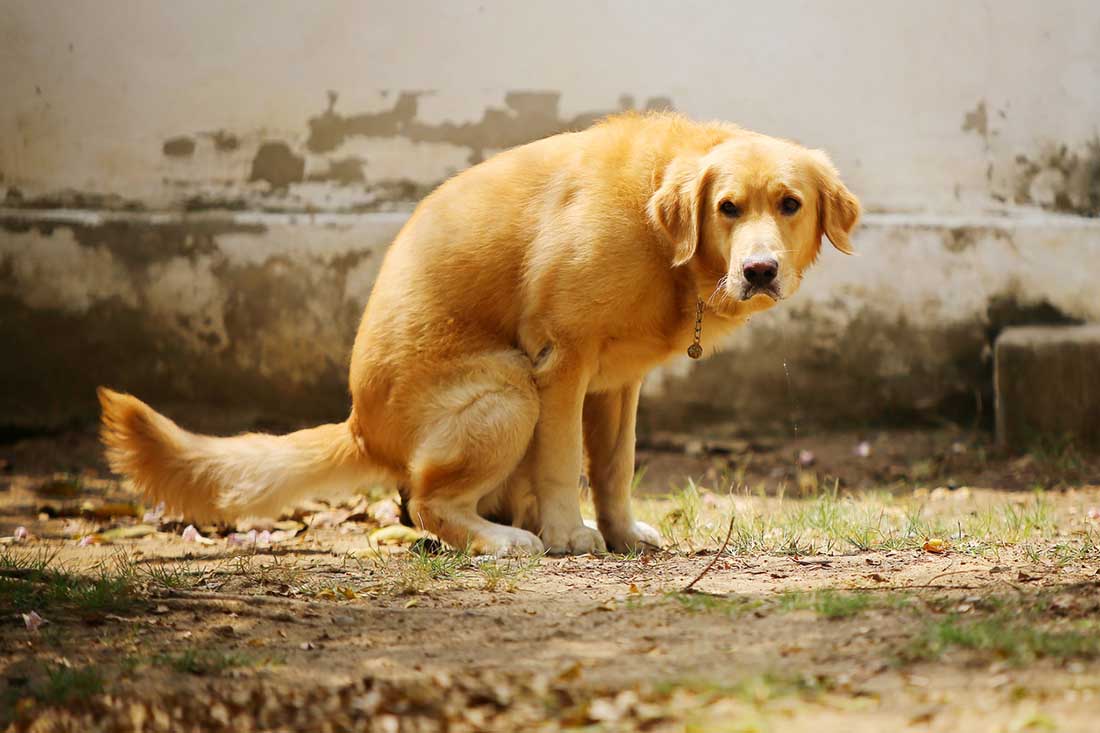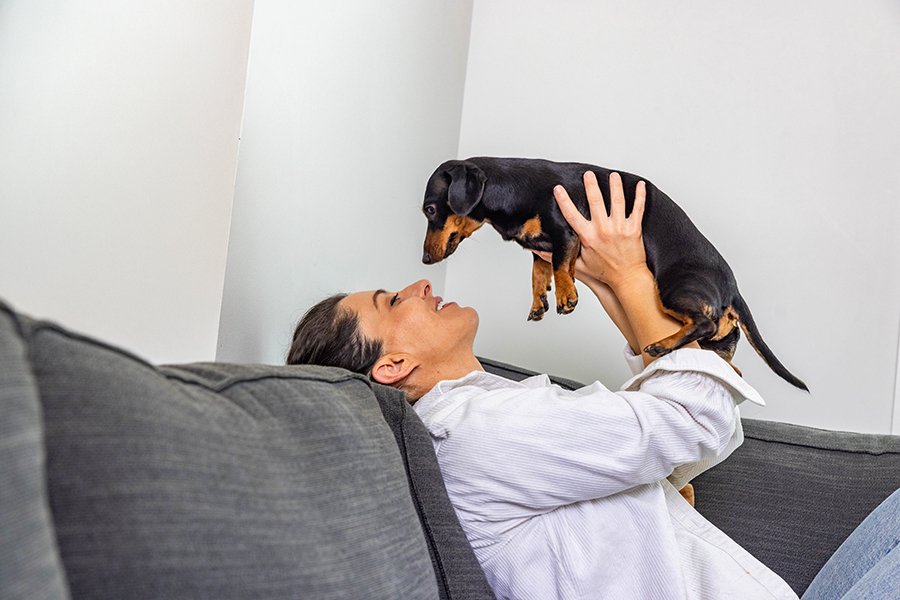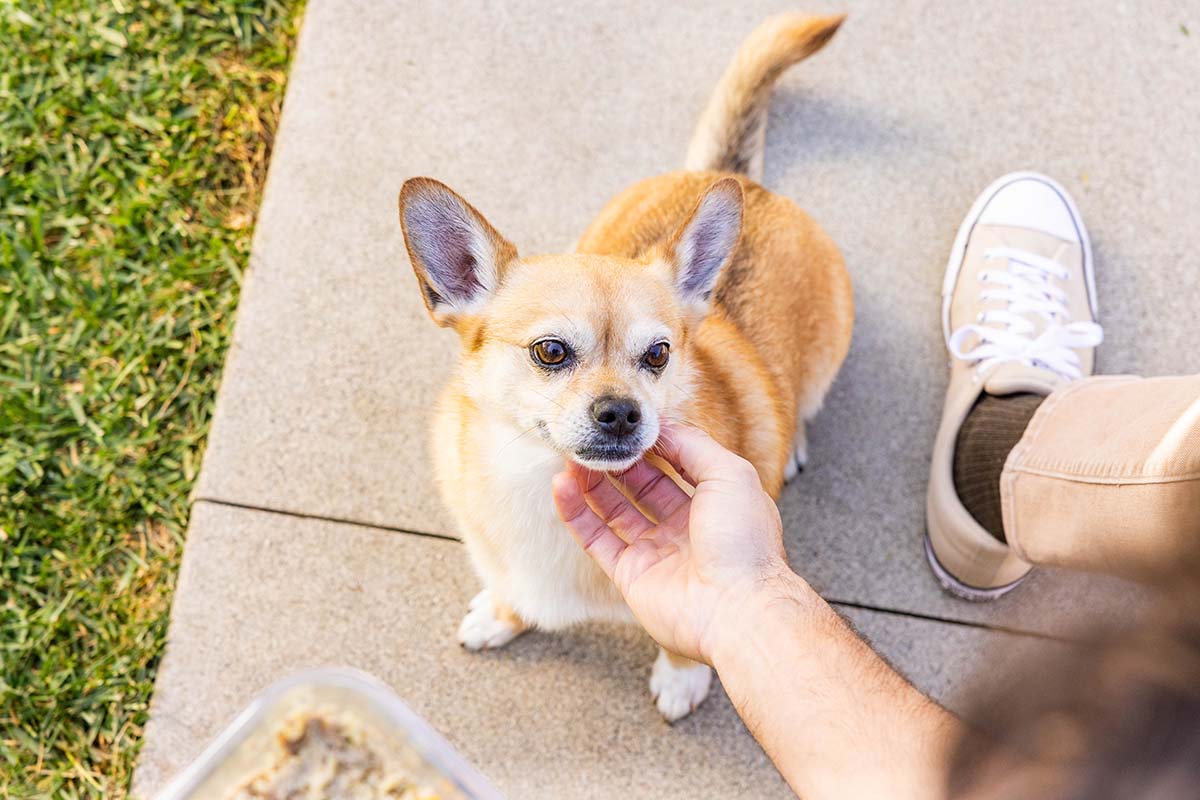Colitis in Dogs
Colitis in dogs is when the colon becomes inflamed. It's important to see your veterinarian is your dog exhibits the following symptoms.
If you have a furry friend, you might have experienced the unpleasant experience of waking up in the middle of the night and realizing your pooch has had an accident. You can smell the diarrhea, and you know your buddy is in distress.
What causes that kind of diarrhea in dogs? Well, there might be a lot of underlying causes, such as parasites, infectious diseases, and the like. Sometimes, there is no identifiable cause. Your veterinarian might just tell you it’s colitis, but what is colitis?
What Is Colitis?
Colitis simply means the inflammation of the colon. The colon is part of the large intestine. Numerous factors can cause it to become inflamed.
There are several bacterial causes of colitis, but other problems can also cause it. Parasites are one possibility, as are allergies, fungal organisms, and even a problem with the immune system.
Whatever the cause, the inflammation of the colon results in the excessive secretion of mucus that impairs the absorption of electrolytes, sodium, and water. This, in turn, stimulates strong muscular contractions, which causes an urge to defecate and abdominal pain — that means diarrhea.
It is important to note that colitis is a type of inflammatory bowel disease, and that is not the same thing as irritable bowel syndrome (IBS) since the two require very different treatment plans.
What are the Causes of Colitis?
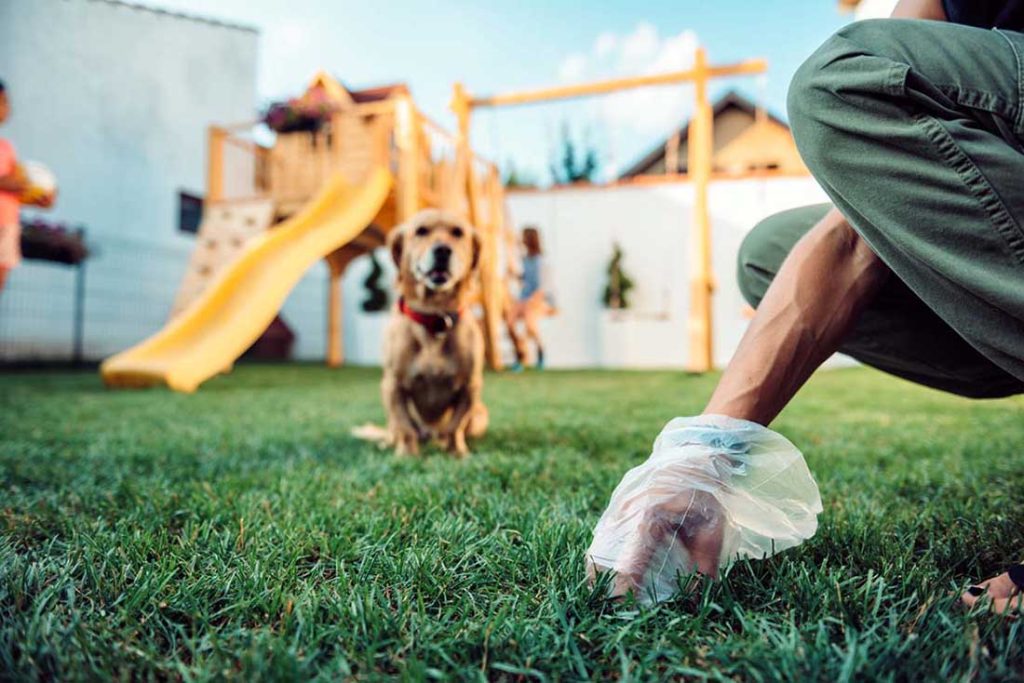
There are numerous possible causes, and the cause might also be unknown. Here are a few known ones, though never proven:
- Parasites — whipworms, hookworms, roundworms, etc.
- Infectious agents — bacterial infection, viral infection, or fungal infections
- Food allergies
In the case of the above-mentioned factors, there is an exaggerated response to dietary, bacterial, or infectious factors within the digestive tract.
Types of Colitis
There are two general types of colitis: chronic colitis and acute colitis. With acute colitis, neutrophil, a type of white blood cell, infiltrates the mucosal lining of the large intestine.
With chronic colitis, the mucosal layer is infiltrated by different types of cells, known as plasma cells and lymphocytes. Experts define chronic colitis as an inflammation of the colon that is present for at least two weeks.
It is the infiltration of the mucosal lining that causes excess production of mucus. That results in the sequelae that lead to muscular contractions and diarrhea. Experts have further classified the forms of colitis based on the type of cell that infiltrates the lining of the large intestine as follows:
- lymphocytic-plasmacytic (most common) — usually causes chronic colitis
- eosinophilic — could be the result of food allergies
- neutrophilic — more common with bacterial infections
- granulomatous — the least common form
What are the Symptoms of Colitis?
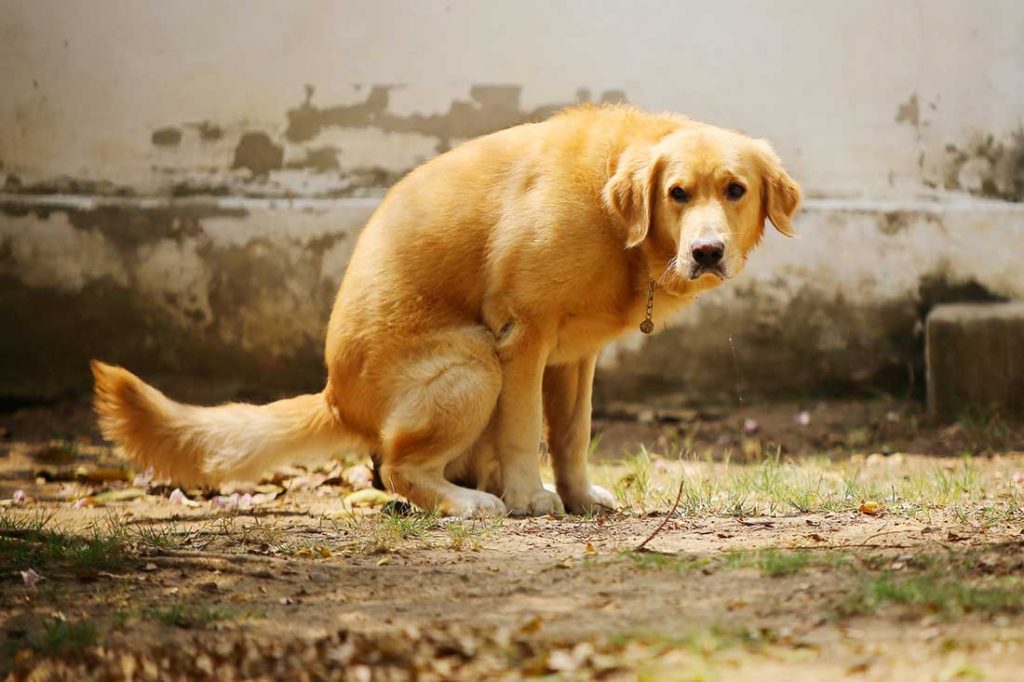
Of course, the main symptoms of colitis are loose stools and outright diarrhea. The diarrhea is often characterized by mucus and hematochezia (the passage of fresh blood through the anus).
You will also notice that your pooch frequently wants to go to the bathroom, but he doesn’t have much luck. That’s called tenesmus. Additionally, it is possible that your dog will have some pain when he defecates.
You will also likely notice that when he does poop, there is less volume to the bowel movement. Your dog might also vomit occasionally. In severe cases, you might also notice weight loss, particularly if the problem involves the small intestine.
Often, the symptoms of colitis may come and go, but they are usually progressive, meaning they get worse over time. It’s important to realize that colitis is more than just occasional diarrhea, and if you see that the problem is ongoing, it’s time to go to the vet.
How Is Colitis Diagnosed?
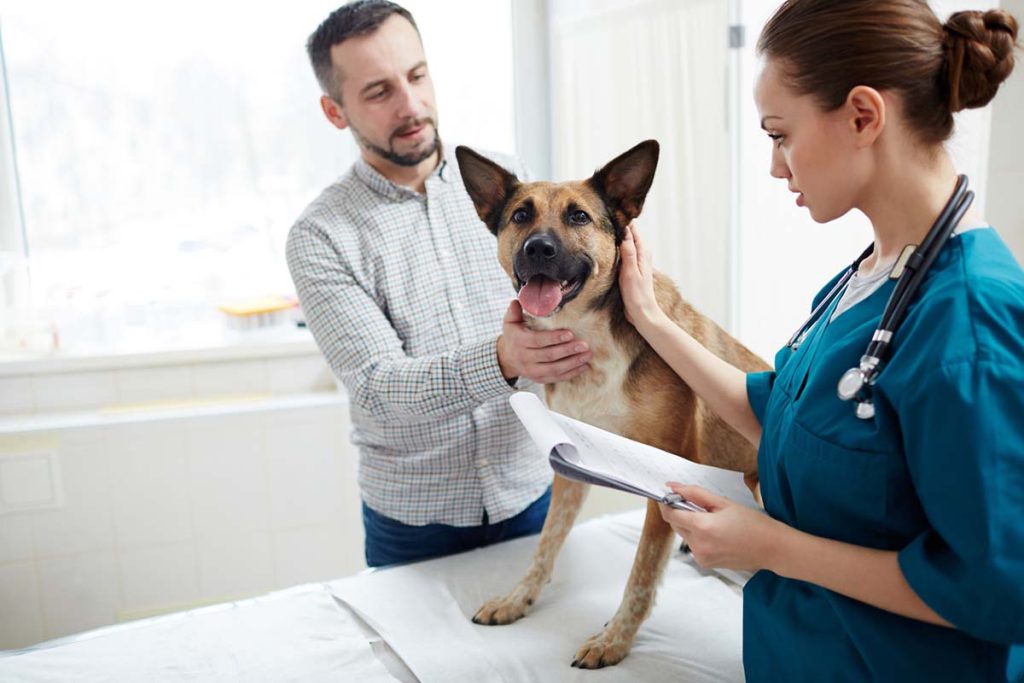
Your DVM will begin with a thorough history and physical examination to diagnose your dog’s colitis. In most cases of colitis, a physical examination is unremarkable. Your veterinarian will likely conduct a thorough rectal examination, and they might find certain things that can mimic the signs of chronic colitis.
These include polyps or malignant tumors. Of course, those call for different types of tests to be conducted, as well as different treatment options.
The vet will also want to evaluate your dog’s feces, so bring a stool sample with you. They’ll do a fecal smear to look for parasites like Giardia and fungal elements. They will probably also do a culture to check for bacterial infections.
They may also do radiographs (X-rays) to look for internal problems like a blockage or foreign bodies. These can also reveal a narrowing of the lumen of the intestines that is associated with colitis.
Your veterinarian may also do blood work to look for evidence of infectious disease. What they are trying to do is exclude inflammation that is secondary to another cause, like parasites, foreign material, or fungal disease. Those would indicate a different treatment regimen. This is particularly vital for cases of granulomatous colitis.
Diagnosing Granulomatous Colitis
Granulomatous colitis, which is associated with an invasive E. coli (Escherichia coli) infection, is also known as histiocytic ulcerative colitis or inflammatory bowel disease. This was first identified in Boxers in 1965 but has also been seen in French bulldogs. Additionally, there have been a few cases reported in other breeds, including Staffordshire Terriers, Doberman Pinschers, and Rottweilers, among others.
For the purpose of diagnosing granulomatous colitis, your veterinarian will need to do a Fluorescence in situ hybridization (FISH) test to identify the bacteria in the tissue.
There are other more advanced diagnostic tests that your veterinarian may need to do, but before that, they will likely recommend a dietary trial to see if that relieves the symptoms.
If all else fails, your veterinarian may opt to do a colonoscopy to directly visualize the mucosal lining of the colon. They will usually take biopsies to look for cells that indicate inflammation or cancer and for the presence of infectious agents.
In most cases of chronic colitis, all of these test results come back normal. Some small animals may demonstrate a type of cell known as an eosinophil, which is associated with allergic reactions, but otherwise, their blood tests and other laboratory analyses are often unremarkable.
How Is Colitis Treated?
Of course, if the inflammation of the colon is the result of any infectious agents, including parasites, those will need to be treated first. This may involve antibiotics, wormers, and anti-inflammatory drugs. The next step is to implement diet changes.
If a food allergy is suspected, you have to first eliminate the culprit. Usually, that means withholding food for 24 hours in animals with acute colitis. That gives the bowel a ‘rest period’ to recover from whatever caused the problem.
Novel Protein Diets
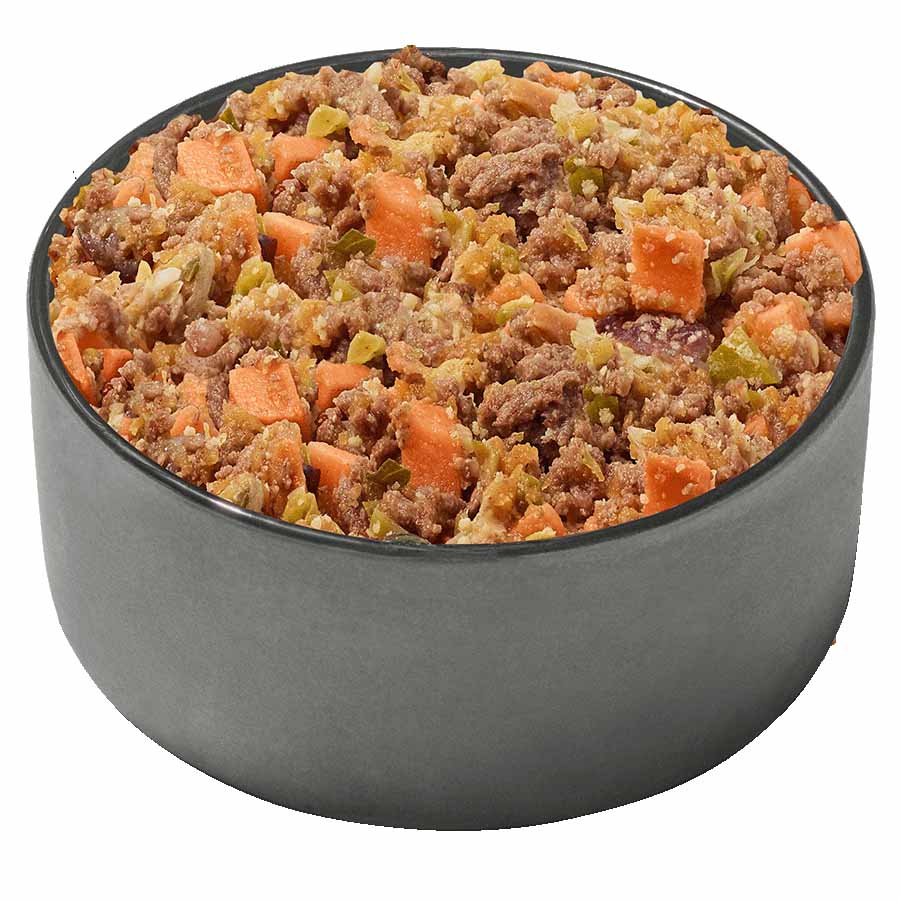
Often, novel protein diets can control the signs of colitis in your dog. When dogs have a food allergy, it is often the protein that causes the reaction. One of the first things your veterinarian will recommend is to change your dog’s diet to one that has a protein source to which he has never previously been exposed. Here are a few alternative protein sources:
- Mutton or lamb
- Venison
- Rabbit
Fiber or Hydrolyzed
Another ingredient you’ll want to ensure is a large part of your dog’s diet is fiber. You can use psyllium to supplement your dog’s food (although this should not be used in Boxers with granulomatous colitis), or you can choose a dog food diet that is high in fiber.
Dietary fiber absorbs water and increases the fecal bulk. While this will produce positive results, it can take as long as six weeks. It’s important to note that adding fiber alone doesn’t usually solve the problem entirely. When done in combination with a novel protein diet, however, the problem can effectively be managed.
If those options do not resolve the problem, you can try a hydrolyzed diet. Hydrolyzed dog food is made by breaking down the proteins into small pieces through a water-based process. This makes the proteins ‘invisible’ to your dog’s immune system.
Another option is to feed a low-residue diet that contains fructooligosaccharides (FOSs). FOSs are used as prebiotics for probiotics. They are a soluble fiber that the beneficial bacteria in the gut feed on, and they also inhibit the growth of harmful bacteria that can cause colitis.
What is the Prognosis for Colitis in Dogs?
While most cases of chronic colitis cannot be cured, they can be managed, often with dietary changes alone. Other types of colitis also respond well to the appropriate dietary and medical treatment options.
Eosinophilic colitis — the kind often associated with food allergies — responds well to diet changes and other therapies that include immunosuppressive agents. There is a form of this known as hypereosinophilic syndrome, however, that is progressive and fatal with little to no effective treatments.
Granulomatous or histiocytic colitis in Boxers, unfortunately, has a grave prognosis, but if treatment is started early in the course of the disease, it can have a better prognosis. Notably, a new treatment regimen that includes enrofloxacin yields a much better prognosis for Boxers.
A Good Diet Is Vital
Pet health is dependent in very large part on their diet. A balanced diet is critical for providing all the nutrients your furry friend needs to stay healthy.
Fresh food diets with whole ingredients that are gently cooked to provide human-grade nutrition are among the healthiest diets you can feed to your best friend. JFFD can work with your veterinarian to create a custom Rx diet for your pet.
Feeding a balanced diet doesn’t guarantee your beloved fur baby will not get colitis, but it gives him the best chance at a long, healthy life.
This content is for informational use only and does not replace professional nutrition and/or medical advice, diagnosis, or treatment. It is not a substitute for and should not be relied upon for specific nutrition and/or medical recommendations. Please talk with your veterinarian about any questions or concerns.
Citations:
“Colitis in Small Animals – Digestive System.” n.d. Merck Veterinary Manual. Accessed June 11, 2024. https://www.merckvetmanual.com/digestive-system/diseases-of-the-stomach-and-intestines-in-small-animals/colitis-in-small-animals#Treatment-and-Control_v3266338.
Rodney S. Bagley, D. V. M. 2007. “World Small Animal Veterinary Association World Congress Proceedings, 2007.” VIN.com, August. https://www.vin.com/apputil/content/defaultadv1.aspx?id=3860811&pid=11242.
Lilliehöök, Inger, and Harold Tvedten. 2003. “Investigation of Hypereosinophilia and Potential Treatments.” Veterinary Clinics of North America: Small Animal Practice 33 (6): 1359–78. https://doi.org/10.1016/s0195-5616(03)00097-4.
Bastan, Idil, Aaron K. Rendahl, Davis Seelig, Michael J. Day, Edward J. Hall, Savita P. Rao, Robert J. Washabau, and P. Sriramarao. 2018. “Assessment of Eosinophils in Gastrointestinal Inflammatory Disease of Dogs.” Journal of Veterinary Internal Medicine 32 (6): 1911–17. https://doi.org/10.1111/jvim.15310.
Rodney S. Bagley, D. V. M. 2007. “World Small Animal Veterinary Association World Congress Proceedings, 2007.” VIN.com, August. https://www.vin.com/apputil/content/defaultadv1.aspx?id=3860811&pid=11242.
Wilson, I. Dodd. 1990. “Hematemesis, Melena, and Hematochezia.” Edited by H. Kenneth Walker, W. Dallas Hall, and J. Willis Hurst. PubMed. Boston: Butterworths. 1990. https://www.ncbi.nlm.nih.gov/books/NBK411/#:~:text=Definition.
